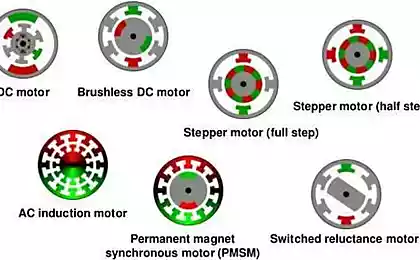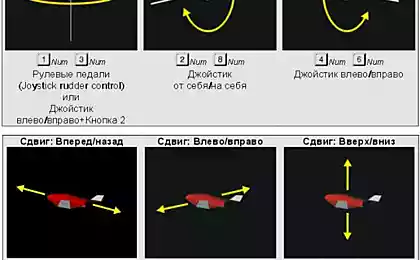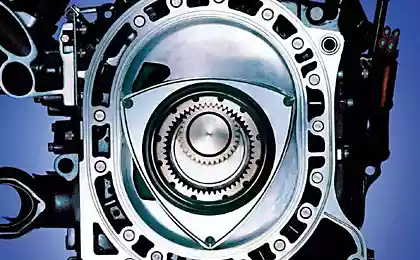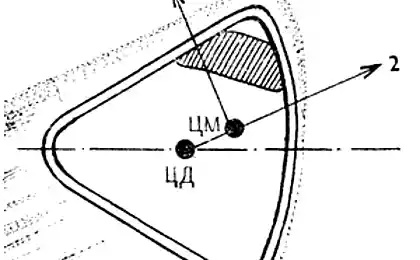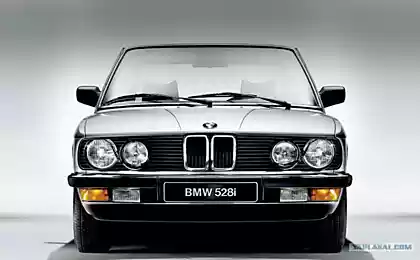888
Famous engines: 10 steps to perfection
These motors have become iconic for automakers from different countries, and in some places they affected the social world citizens. I present to you the top ten landmark civilian automobile engines.
10. The founder of downsizing
Decent engine performance at a modest working volume is not particularly surprising. We are starting to get used to the concept of "downsizing", knowing that the era of large displacement engines is gradually disappearing. It began, in my opinion, to debut in the mid-1990s, supercharged engine 1, 8 liters developed "Audi". With moderate working volume it had to satisfy most car owners of different classes. Therefore, even in the simplest version of the engine gave out 148 power, which is enough to turn into a little lighter hatchback "SEAT Ibiza" and not to force the owner to burn with shame prestigious "Audi A6».
Actually, displacement did not say anything about the capabilities of the unit. It was a small (including size - puts it at least along, though across) a masterpiece of its time: five valves per cylinder, variable intake phase, forged aluminum pistons, and of course, turbocharging.
With it, the engine power was raised higher and higher, reaching in special version "Audi TT Quattro Sport 'to 236 forces. This limit was due to the specifics of a road car. The racing formula "Palmer Audi," where life is not so important, with the new control unit and the boost unit with 1800 cc engine removed 365 forces. In Formula 2, transforming the production engine in pure racing machine, and does a fantastic reached 480 forces. Therefore, the coming transition of Formula 1 on the "quartet" of 1, 6 L in the light of the achievements of the motor "Audi" does not seem absurd.
Supercharged engine capacity of 1, 8 liters developed "Audi»
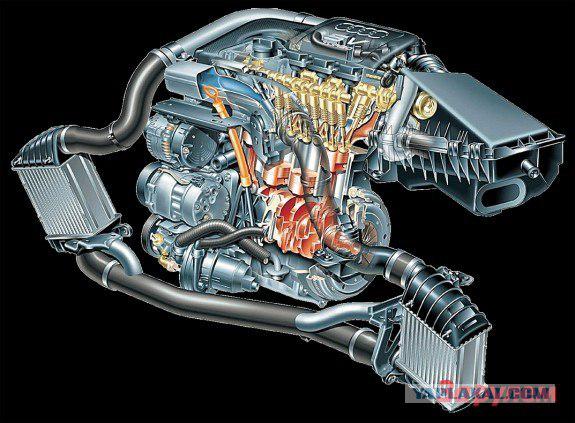
9. Loyalty rotor
The exceptional case - when the car company is strongly associated with one type of engine. Of course, "Mazda" not the invented rotary-piston Wankel engine. But it is in difficult times the energy crisis of the 1970s overcame the circumstances not dropped like the others, it is very difficult to fine-tuning the design, and will continue to improve "Wankel" in the narrow, but promising for the image of the segment boosted sports car. Although originally it was planned that all models "Mazda", up to trucks and buses, will pass with time on the Wankel engine.
When in 1975 two-piece motor with index 13B appeared on serial machines, no one could have predicted that he would be the most massive in the world and the RAP will last in the production of more than 30 years. Moreover, even the modern mazdovsky RAP "Renezis" - a result of the evolution 13B.
It is this engine became a conductor in a series for the first time applied to the majority of RAP novelties, which provided him with such a long life - tuned intake manifold with variable geometry, electronic fuel injection, turbocharging. As a result, the engine that started life under the hood of a pickup truck with a utilitarian power a little more than 100 forces turned into the king of racing, to issue even in serial form at least 280.
Excessive consumption and large waste oil - the inevitable problems of any RAP - were justified payback for the modest weight, low center of gravity and the ability to turn over 10 thousand revolutions per minute. Mazdovskie coupe RX-7 dominated the US Touring Car Championship during the 1980s, largely due to the rotary piston motor 13B.
Rotary-piston Wankel engine
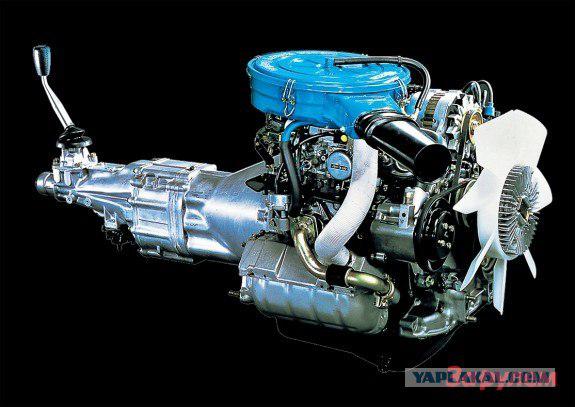
8. "Eight" of the planet Earth
Anyone who is even slightly interested in the American automobile industry, must have heard about the "eight", "Chevrolet" family of Small Block. It is not surprising, because it almost unchanged can be found on various models of concern "General Motors" from 1955 to 2004. Long career has made this nizhnevalny V8 engine is the most widespread in the world. Small Block of the first generation (not to be confused with the same engines the second and third generations of the series the LT and LS!) Is available now, but only in the aftermarket. The total number of engines produced to date has exceeded 90 million.
It is not necessary to relate the word Small with a small displacement engine. Displacement of "eight" never fell below 4, 3 liters, and in the best of times is 6, 6 l. His name was the engine for a small stack height due to the ratio of the diameter of the cylinder and the piston stroke: on the first sample 95, 2h76, 2 mm. This is due to Short-terms of reference: a new "eight" should fit under the low hood roadster "Chevrolet Corvette", who had almost lost demand due to weak for him to row "Six". Does not appear this powerful V8, podhlestnuvshy interest in the first mainstream American sports car, "Corvette" is unlikely to have survived the mid-1950s.
Soon shevroletovskogo successful "baby" designated base "eight" for the entire GM, although the V8 engines of their own design were each compartment of concern. Simple, reliable and unpretentious engine has experienced all levels of recognition: racing, worked as a driver of boats and occasionally even mounted on light aircraft. And although in the last ten years of his full life of the engine is only available on pickup trucks and vans, all automotive fans know that this deserved V8 once was born to save the "Chevrolet Corvette».
"Eight" "Chevrolet" Small Block
family
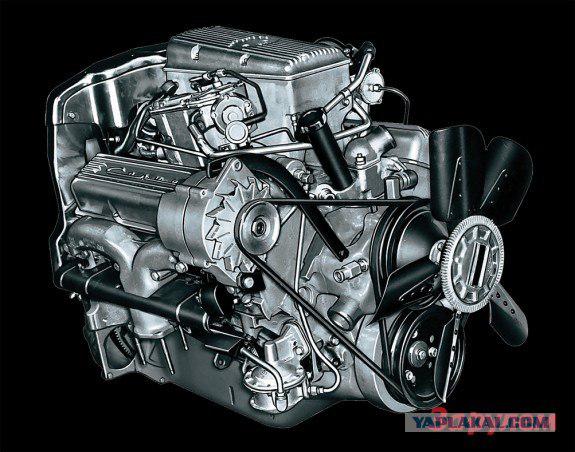
7. The unique
What rating do without BMW engines! Mark came to our list of already exceptional commitment row "Six" - once this arrangement automobile engines was widespread. In addition to the Bavarians, in cars (SUVs and pick-ups do not count) it is used today only "sale" and the Australian branch of the "Ford" (the others surrendered in favor of a less balanced, but much more compact V6). But BMW stands out: the company only managed to squeeze in a row six cylinders all the benefits - from the stunningly smooth operation to the ability to easily spin up to the very high speed.
With each generation, starting with "Six" BMW specimen 1968, which was prepared by adding a pair of cylinders to the already produces "four", these engines became lighter, more powerful, more perfect. A multi-scheme for the Bavarians were virtually banned - the first V12 appeared only in 1986, but generally only V8 in 1992. Making these engines easier to justify marketing than true love engineers - they are all soul and the ability to put it six in a row of cylinders.
Apotheosis atmospheric "Six" BMW - S54 engine of 2000, designed for the M3. It is a hymn to perfection racing engine in fact, hoisted on a civilian car. Heavy lifting at the beginning, but the burgeoning at the slightest hint of sporty driving style. With 3, 2 L working volume removed 343 forces (per liter - 107) - for rear engine even now a great result.
It would be difficult to achieve without the use of the latest technology at that time - the individual throttles for each cylinder, electronically controlled, variable valve system, and both the intake and output. To accept any engine load, it even translated into cast iron block that BMW rare.
Unfortunately, the next generation M3 abandoned family values in favor of the V8. This is also a very good engine, but the joy of taming the enraged beast left with the same "six". Similar to her engines in the current environment are considered as would be more accurate to say, politically incorrect.
"Six" BMW
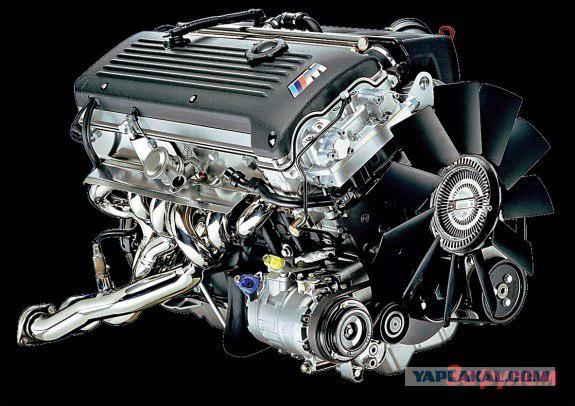
6. Legend races
Recent examples of this V8 «Chemie" collected in 1971 (the current family of the same name does not have anything to do with it), but is still more than a quarter century, this engine served as a favorite toy lovers of drag racing. The motor, which appeared in 1964 as a pure racing series NASCAR, was a perfect example of sporting V8 (working volume of 7 liters, or 426 cu. Inches in the American system, the standard capacity of 425 forces) with minimal use of complex technologies: nizhnevalny, two valves per cylinder.
The most important difference from the competition became hemispherical (hence the word "hemi" - "half" translated from English) combustor will optimize the process - to get more power at a lower compression ratio. However, this is not invented the "Chrysler". His merit is that, based on known technology, he created an invincible engine is different, in addition to performance, even unreal strength that can withstand the most horrible methods of boosting. No wonder the "Hemi" weighed significantly more than any other V8 beginning of 1960 - almost 400 kg. But this fact did not prevent cars from the 426-m "Hemi" confidently smash rivals in the race.
Hegemony krayslerovskogo motor repeatedly tried to limit - to rewrite the rules, changing the number required for homologation serial motors, but he did not give up and kept leading position in NASCAR until 1970. By the time he became not only a sport but also a street legend: production machines equipped with the road version, "Hemi", produced in miniscule amounts - they did no more than 11 thousand, and, and this smallness distributed among several models of "Dodge" and "Plymouth ". Today, cars with original "Hemi", despite the primitive construction cost a fortune - the legend went to the next round.
V8 «Chemi»
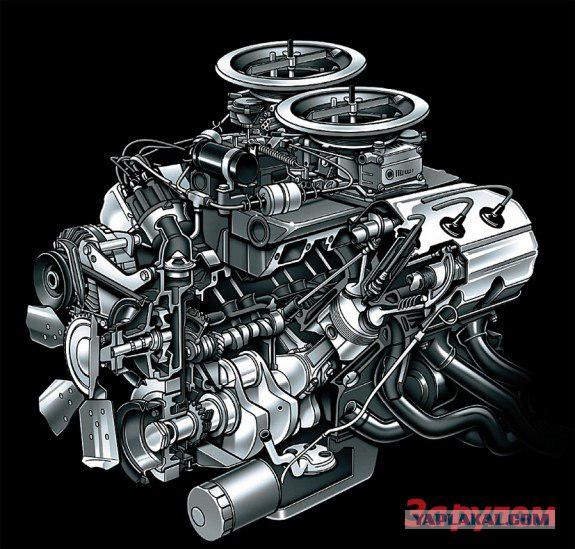
5. Harder does not happen
The most unusual and ambitious project unique layout engine W16 nurtured for the revival of the brand "Bugatti". In fact, this engine, except for the grand power 1001 hp, is the logical development of a family of compact VR-shaped engines "Volkswagen". They differed critically low angle of the cylinders - just 15 degrees, allowing you to use both series one head. Motor VR6 appeared on the "Volkswagen" in 1991. The US market demanded a six-cylinder cars, the Germans managed to get out of the situation, using the original scheme which allows you to increase the engine compartment is easy to fit "six" (both along and across) instead of the standard four-cylinder.
Later lucky find has been developed on a larger scale. The ambitions of Ferdinand Piëch, who wanted to make a "Volkswagen" top brand, led to the creation W8, are two VR4, mounted on a common housing at an angle of 72 degrees. Appeared W12, «collected» two VR6. But the engine "Bugatti" even in this company stands. Before its creators had the task almost impossible - to issue a record power at minimum weight. Therefore, even when the motor is similar scheme turned out a different level - made on the brink of madness engineering. Designers most compacted area around the engine. Blocks two VR8 destroyed at 90 degrees, placing between them just four turbochargers.
A serious problem arose with the cooling - solving it, but for some intercoolers provided 15 liters of coolant. Typically, this amount was enough for the whole engine. But "Veyron" does not fit into the standard schemes - to cool its engine in extreme conditions worked three separate radiator, surpassing 40 liters of antifreeze. There were problems with the diagnosis, because failure to identify one of the 16 cylinders on the ear is almost impossible. Therefore, the engine equipped with the system self-diagnostic routine that can quickly solve the problem until the problem off the cylinder.
And now the most interesting. For all the complexity and grandeur of conception (valves alone - wait! - 64 pieces) the creators managed to keep the weight W16 within 400 kg. The financial factor in the creation of this engine had almost no value, so titanium connecting rods and all-aluminum engine oil pump to "Bugatti" in the order of things.
W16
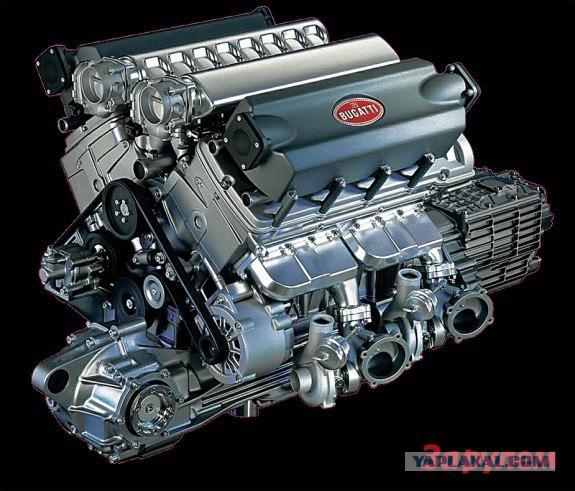
4. The founder of the American dream
Now, the incarnation of one of the last great ideas of Henry Ford, which overturned the automotive world. Before him, no one imagined that the massive car can easily complete the prestigious and powerful "eight", which was considered to belong only expensive luxury cars. Introduced in 1932, the Ford V8 has changed drastically over the next half-century idea of the cars from overseas. They clearly superior to that of the size of the European model of equal value, and the emergence of mass finally bred V8 automotive development at different sides of the Atlantic in the opposite direction.
But Henry Ford was able to reduce the cost of quite complicated and massive machine to the level of consumer goods? Oh, there was plenty of tricks. For example, both the cylinder block and crankcase in the Ford V8 cast as a single piece. The "eights" old school it was a minimum of three separate elements, are fastened together with bolts. Crankshaft, instead of forging, cast, followed by thermal hardening, it also reduces the cost.
Camshaft located in the block valves and exhaust system placed inside the cylinders - this simplifies the design of the engine, however, has led to overheating at the slightest problems with cooling. Even in the initial version of "eight" in the working volume of 3, 2 l betrayed decent 65 forces, which quickly made the "Ford-V8» favorite of gangsters and police. John Dillinger and Clyde Barrow in between bloody deeds managed to drop a few lines of Henry Ford with gratitude for such a fast car.
When I first came V8 retirement age, they were in the hands of young people who worked on the basis of their unusual cars, nicknamed "hot-rod". Simple, powerful and easy to boosting of Ford's "eight" contributed hugely avtokontrkultury birth. But the firm has sent the engine to retire only in 1953, when eight-cylinder engine in the American cars have become commonplace.
"Ford's» V8

3. To change the consciousness
In 1993, in the depths of the research division "Toyota" group was created to develop advanced machines with minimal emissions that could occupy a niche between conventional cars with internal combustion engines and electric vehicles. The result was appeared in 1997. "Toyota Prius" - the first mass car with hybrid drive. Then he was seen as an interesting experiment, toy, deliberately sold at a loss, which is unlikely to go beyond adoring exotic islands of Japan. But "Toyota" build a more serious plans.
The fundamental difference between "Prius" of other hybrid cars, already existed at the time (we are talking about a variety of experimental and a little earlier entered the market burst "Honda-Insight"), concluded in a new approach to the construction of such a model. "Prius" as a hybrid created from the beginning, without simplifications and compromises such as borrowing from the traditional model of the body or the use of a conventional manual transmission (as was done in the "Ince»).
"Toyota" has implemented a hybrid transmission as an integral part of the machine. Even a 1, 5-liter gasoline engine is specifically modified to work with an electric motor, moving it to the Atkinson cycle, wherein the compression stroke is shortened due to the increased length of the opening of the intake valves. It is possible to obtain an unusually high compression ratio (13-13, 5) and an additional plus for the economy and ecology.
Payback complete helplessness became the engine at low speeds, but for the hybrid, which always has the support of the electric motor, it is not a problem. This integrated approach eventually made a "Prius" hybrid trendsetter. He stood at the beginning of a process that is unstoppable.
Hybrid drive "Toyota Prius»
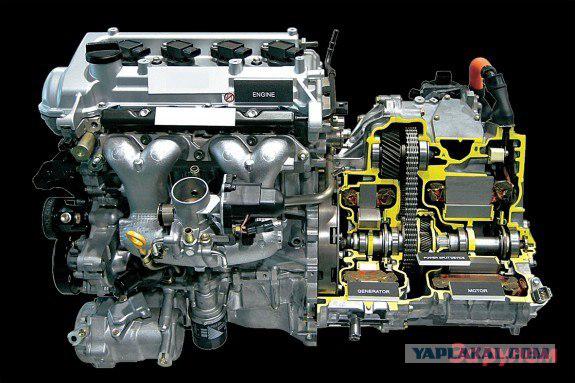
2. A favorite all over the world
What to say about the air vent from the "Volkswagen"? He also legendary as the "Beetle" - a car, under which it is made. Even more - in fact a "Beetle" scope of this motor is not restricted. Simple, robust and lightweight, air-cooled four-cylinder boxer was so effective that its popularity has far exceeded even the recognition of the most common car in the world.
Since then, both thanks to the talent of Ferdinand Porsche's first samples motor in 1933 appeared prototype "Bug", he tried dozens of professions. Sufficient power (before the war were given a minimum of 24 samples of strength and most powerful at the end of serial production tripled the figure), in any climate-free air cooling and low weight (aluminum cylinder, crankcase - magnesium alloy) allowed motor folksvagenovsky find a lot of lessons.
Source:
10. The founder of downsizing
Decent engine performance at a modest working volume is not particularly surprising. We are starting to get used to the concept of "downsizing", knowing that the era of large displacement engines is gradually disappearing. It began, in my opinion, to debut in the mid-1990s, supercharged engine 1, 8 liters developed "Audi". With moderate working volume it had to satisfy most car owners of different classes. Therefore, even in the simplest version of the engine gave out 148 power, which is enough to turn into a little lighter hatchback "SEAT Ibiza" and not to force the owner to burn with shame prestigious "Audi A6».
Actually, displacement did not say anything about the capabilities of the unit. It was a small (including size - puts it at least along, though across) a masterpiece of its time: five valves per cylinder, variable intake phase, forged aluminum pistons, and of course, turbocharging.
With it, the engine power was raised higher and higher, reaching in special version "Audi TT Quattro Sport 'to 236 forces. This limit was due to the specifics of a road car. The racing formula "Palmer Audi," where life is not so important, with the new control unit and the boost unit with 1800 cc engine removed 365 forces. In Formula 2, transforming the production engine in pure racing machine, and does a fantastic reached 480 forces. Therefore, the coming transition of Formula 1 on the "quartet" of 1, 6 L in the light of the achievements of the motor "Audi" does not seem absurd.
Supercharged engine capacity of 1, 8 liters developed "Audi»

9. Loyalty rotor
The exceptional case - when the car company is strongly associated with one type of engine. Of course, "Mazda" not the invented rotary-piston Wankel engine. But it is in difficult times the energy crisis of the 1970s overcame the circumstances not dropped like the others, it is very difficult to fine-tuning the design, and will continue to improve "Wankel" in the narrow, but promising for the image of the segment boosted sports car. Although originally it was planned that all models "Mazda", up to trucks and buses, will pass with time on the Wankel engine.
When in 1975 two-piece motor with index 13B appeared on serial machines, no one could have predicted that he would be the most massive in the world and the RAP will last in the production of more than 30 years. Moreover, even the modern mazdovsky RAP "Renezis" - a result of the evolution 13B.
It is this engine became a conductor in a series for the first time applied to the majority of RAP novelties, which provided him with such a long life - tuned intake manifold with variable geometry, electronic fuel injection, turbocharging. As a result, the engine that started life under the hood of a pickup truck with a utilitarian power a little more than 100 forces turned into the king of racing, to issue even in serial form at least 280.
Excessive consumption and large waste oil - the inevitable problems of any RAP - were justified payback for the modest weight, low center of gravity and the ability to turn over 10 thousand revolutions per minute. Mazdovskie coupe RX-7 dominated the US Touring Car Championship during the 1980s, largely due to the rotary piston motor 13B.
Rotary-piston Wankel engine

8. "Eight" of the planet Earth
Anyone who is even slightly interested in the American automobile industry, must have heard about the "eight", "Chevrolet" family of Small Block. It is not surprising, because it almost unchanged can be found on various models of concern "General Motors" from 1955 to 2004. Long career has made this nizhnevalny V8 engine is the most widespread in the world. Small Block of the first generation (not to be confused with the same engines the second and third generations of the series the LT and LS!) Is available now, but only in the aftermarket. The total number of engines produced to date has exceeded 90 million.
It is not necessary to relate the word Small with a small displacement engine. Displacement of "eight" never fell below 4, 3 liters, and in the best of times is 6, 6 l. His name was the engine for a small stack height due to the ratio of the diameter of the cylinder and the piston stroke: on the first sample 95, 2h76, 2 mm. This is due to Short-terms of reference: a new "eight" should fit under the low hood roadster "Chevrolet Corvette", who had almost lost demand due to weak for him to row "Six". Does not appear this powerful V8, podhlestnuvshy interest in the first mainstream American sports car, "Corvette" is unlikely to have survived the mid-1950s.
Soon shevroletovskogo successful "baby" designated base "eight" for the entire GM, although the V8 engines of their own design were each compartment of concern. Simple, reliable and unpretentious engine has experienced all levels of recognition: racing, worked as a driver of boats and occasionally even mounted on light aircraft. And although in the last ten years of his full life of the engine is only available on pickup trucks and vans, all automotive fans know that this deserved V8 once was born to save the "Chevrolet Corvette».
"Eight" "Chevrolet" Small Block
family

7. The unique
What rating do without BMW engines! Mark came to our list of already exceptional commitment row "Six" - once this arrangement automobile engines was widespread. In addition to the Bavarians, in cars (SUVs and pick-ups do not count) it is used today only "sale" and the Australian branch of the "Ford" (the others surrendered in favor of a less balanced, but much more compact V6). But BMW stands out: the company only managed to squeeze in a row six cylinders all the benefits - from the stunningly smooth operation to the ability to easily spin up to the very high speed.
With each generation, starting with "Six" BMW specimen 1968, which was prepared by adding a pair of cylinders to the already produces "four", these engines became lighter, more powerful, more perfect. A multi-scheme for the Bavarians were virtually banned - the first V12 appeared only in 1986, but generally only V8 in 1992. Making these engines easier to justify marketing than true love engineers - they are all soul and the ability to put it six in a row of cylinders.
Apotheosis atmospheric "Six" BMW - S54 engine of 2000, designed for the M3. It is a hymn to perfection racing engine in fact, hoisted on a civilian car. Heavy lifting at the beginning, but the burgeoning at the slightest hint of sporty driving style. With 3, 2 L working volume removed 343 forces (per liter - 107) - for rear engine even now a great result.
It would be difficult to achieve without the use of the latest technology at that time - the individual throttles for each cylinder, electronically controlled, variable valve system, and both the intake and output. To accept any engine load, it even translated into cast iron block that BMW rare.
Unfortunately, the next generation M3 abandoned family values in favor of the V8. This is also a very good engine, but the joy of taming the enraged beast left with the same "six". Similar to her engines in the current environment are considered as would be more accurate to say, politically incorrect.
"Six" BMW

6. Legend races
Recent examples of this V8 «Chemie" collected in 1971 (the current family of the same name does not have anything to do with it), but is still more than a quarter century, this engine served as a favorite toy lovers of drag racing. The motor, which appeared in 1964 as a pure racing series NASCAR, was a perfect example of sporting V8 (working volume of 7 liters, or 426 cu. Inches in the American system, the standard capacity of 425 forces) with minimal use of complex technologies: nizhnevalny, two valves per cylinder.
The most important difference from the competition became hemispherical (hence the word "hemi" - "half" translated from English) combustor will optimize the process - to get more power at a lower compression ratio. However, this is not invented the "Chrysler". His merit is that, based on known technology, he created an invincible engine is different, in addition to performance, even unreal strength that can withstand the most horrible methods of boosting. No wonder the "Hemi" weighed significantly more than any other V8 beginning of 1960 - almost 400 kg. But this fact did not prevent cars from the 426-m "Hemi" confidently smash rivals in the race.
Hegemony krayslerovskogo motor repeatedly tried to limit - to rewrite the rules, changing the number required for homologation serial motors, but he did not give up and kept leading position in NASCAR until 1970. By the time he became not only a sport but also a street legend: production machines equipped with the road version, "Hemi", produced in miniscule amounts - they did no more than 11 thousand, and, and this smallness distributed among several models of "Dodge" and "Plymouth ". Today, cars with original "Hemi", despite the primitive construction cost a fortune - the legend went to the next round.
V8 «Chemi»

5. Harder does not happen
The most unusual and ambitious project unique layout engine W16 nurtured for the revival of the brand "Bugatti". In fact, this engine, except for the grand power 1001 hp, is the logical development of a family of compact VR-shaped engines "Volkswagen". They differed critically low angle of the cylinders - just 15 degrees, allowing you to use both series one head. Motor VR6 appeared on the "Volkswagen" in 1991. The US market demanded a six-cylinder cars, the Germans managed to get out of the situation, using the original scheme which allows you to increase the engine compartment is easy to fit "six" (both along and across) instead of the standard four-cylinder.
Later lucky find has been developed on a larger scale. The ambitions of Ferdinand Piëch, who wanted to make a "Volkswagen" top brand, led to the creation W8, are two VR4, mounted on a common housing at an angle of 72 degrees. Appeared W12, «collected» two VR6. But the engine "Bugatti" even in this company stands. Before its creators had the task almost impossible - to issue a record power at minimum weight. Therefore, even when the motor is similar scheme turned out a different level - made on the brink of madness engineering. Designers most compacted area around the engine. Blocks two VR8 destroyed at 90 degrees, placing between them just four turbochargers.
A serious problem arose with the cooling - solving it, but for some intercoolers provided 15 liters of coolant. Typically, this amount was enough for the whole engine. But "Veyron" does not fit into the standard schemes - to cool its engine in extreme conditions worked three separate radiator, surpassing 40 liters of antifreeze. There were problems with the diagnosis, because failure to identify one of the 16 cylinders on the ear is almost impossible. Therefore, the engine equipped with the system self-diagnostic routine that can quickly solve the problem until the problem off the cylinder.
And now the most interesting. For all the complexity and grandeur of conception (valves alone - wait! - 64 pieces) the creators managed to keep the weight W16 within 400 kg. The financial factor in the creation of this engine had almost no value, so titanium connecting rods and all-aluminum engine oil pump to "Bugatti" in the order of things.
W16

4. The founder of the American dream
Now, the incarnation of one of the last great ideas of Henry Ford, which overturned the automotive world. Before him, no one imagined that the massive car can easily complete the prestigious and powerful "eight", which was considered to belong only expensive luxury cars. Introduced in 1932, the Ford V8 has changed drastically over the next half-century idea of the cars from overseas. They clearly superior to that of the size of the European model of equal value, and the emergence of mass finally bred V8 automotive development at different sides of the Atlantic in the opposite direction.
But Henry Ford was able to reduce the cost of quite complicated and massive machine to the level of consumer goods? Oh, there was plenty of tricks. For example, both the cylinder block and crankcase in the Ford V8 cast as a single piece. The "eights" old school it was a minimum of three separate elements, are fastened together with bolts. Crankshaft, instead of forging, cast, followed by thermal hardening, it also reduces the cost.
Camshaft located in the block valves and exhaust system placed inside the cylinders - this simplifies the design of the engine, however, has led to overheating at the slightest problems with cooling. Even in the initial version of "eight" in the working volume of 3, 2 l betrayed decent 65 forces, which quickly made the "Ford-V8» favorite of gangsters and police. John Dillinger and Clyde Barrow in between bloody deeds managed to drop a few lines of Henry Ford with gratitude for such a fast car.
When I first came V8 retirement age, they were in the hands of young people who worked on the basis of their unusual cars, nicknamed "hot-rod". Simple, powerful and easy to boosting of Ford's "eight" contributed hugely avtokontrkultury birth. But the firm has sent the engine to retire only in 1953, when eight-cylinder engine in the American cars have become commonplace.
"Ford's» V8

3. To change the consciousness
In 1993, in the depths of the research division "Toyota" group was created to develop advanced machines with minimal emissions that could occupy a niche between conventional cars with internal combustion engines and electric vehicles. The result was appeared in 1997. "Toyota Prius" - the first mass car with hybrid drive. Then he was seen as an interesting experiment, toy, deliberately sold at a loss, which is unlikely to go beyond adoring exotic islands of Japan. But "Toyota" build a more serious plans.
The fundamental difference between "Prius" of other hybrid cars, already existed at the time (we are talking about a variety of experimental and a little earlier entered the market burst "Honda-Insight"), concluded in a new approach to the construction of such a model. "Prius" as a hybrid created from the beginning, without simplifications and compromises such as borrowing from the traditional model of the body or the use of a conventional manual transmission (as was done in the "Ince»).
"Toyota" has implemented a hybrid transmission as an integral part of the machine. Even a 1, 5-liter gasoline engine is specifically modified to work with an electric motor, moving it to the Atkinson cycle, wherein the compression stroke is shortened due to the increased length of the opening of the intake valves. It is possible to obtain an unusually high compression ratio (13-13, 5) and an additional plus for the economy and ecology.
Payback complete helplessness became the engine at low speeds, but for the hybrid, which always has the support of the electric motor, it is not a problem. This integrated approach eventually made a "Prius" hybrid trendsetter. He stood at the beginning of a process that is unstoppable.
Hybrid drive "Toyota Prius»

2. A favorite all over the world
What to say about the air vent from the "Volkswagen"? He also legendary as the "Beetle" - a car, under which it is made. Even more - in fact a "Beetle" scope of this motor is not restricted. Simple, robust and lightweight, air-cooled four-cylinder boxer was so effective that its popularity has far exceeded even the recognition of the most common car in the world.
Since then, both thanks to the talent of Ferdinand Porsche's first samples motor in 1933 appeared prototype "Bug", he tried dozens of professions. Sufficient power (before the war were given a minimum of 24 samples of strength and most powerful at the end of serial production tripled the figure), in any climate-free air cooling and low weight (aluminum cylinder, crankcase - magnesium alloy) allowed motor folksvagenovsky find a lot of lessons.
Source:

